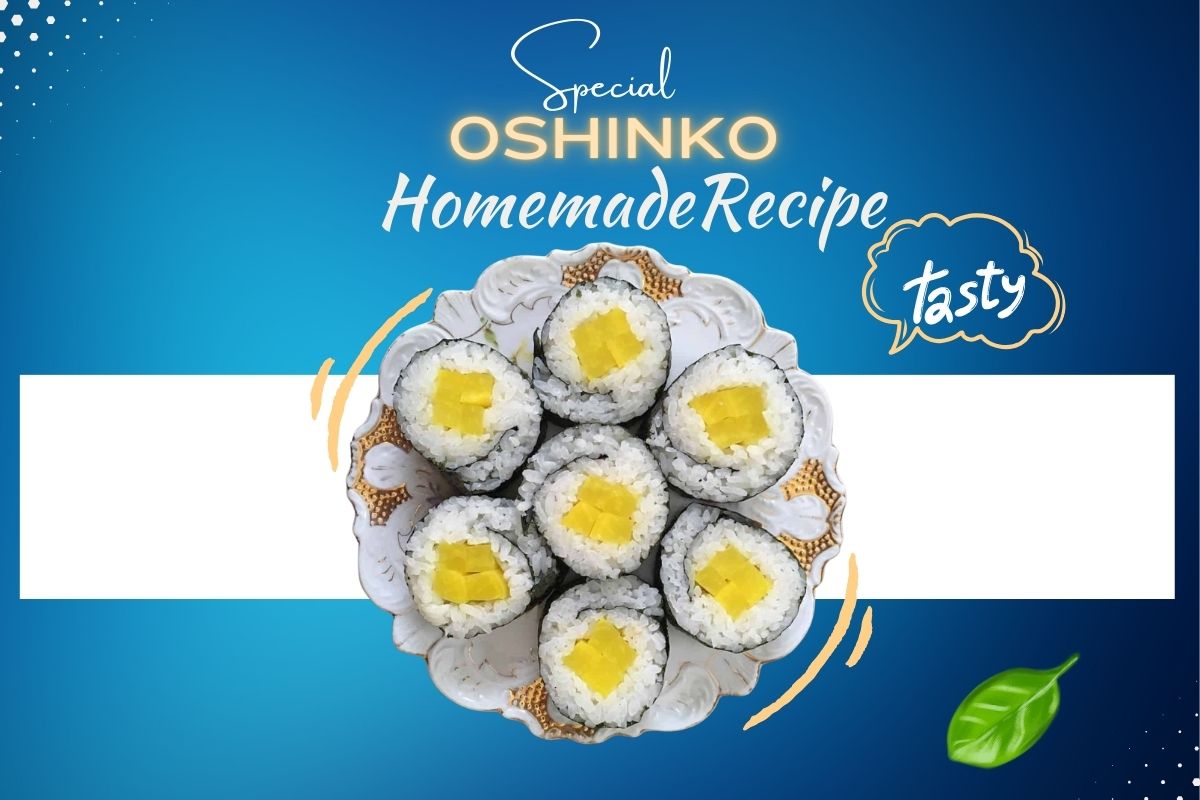Have you ever wondered what those crunchy, colorful, and tangy vegetables are that come with your sushi or bento box? Oshinko are pickled vegetables from Japan that have been popular for a long time. They’re tasty and healthy because they contain good bacteria, vitamins, and minerals.
You can easily make oshinko at home using only a few ingredients. It’s simple, and you can adjust the taste and texture to your preference.
In this article, we’re going to guide you through the process of making oshinko at home. We’ll provide step-by-step instructions along with some tips and tricks. Additionally, you’ll discover types of oshinko, their health benefits, and the correct way to store them.
Are you excited to embark on a flavorful journey with oshinko? Let’s start!
What Are the Different Types of Oshinko?
It is a general term for Japanese pickles, but there are many different varieties of oshinko, each with its flavor and texture. Some of the most common types of oshinko are:
- Daikon: Daikon is a long, white radish that is often pickled with salt, vinegar, and turmeric, giving it a yellow color and a crisp and slightly spicy taste.
- Cucumber: Cucumber is a refreshing and crunchy vegetable that is usually pickled with salt, vinegar, and sugar, sometimes with added spices like ginger or shiso.
- Takuan: Takuan is a type of daikon that is fermented with rice bran, salt, and sugar for a long time, resulting in a brownish-yellow color and a tangy and sweet flavor.
- Eggplant: Eggplant is a purple vegetable often pickled with salt, vinegar, sugar, and soy sauce, giving it a soft and savory taste.
- Turnip: Turnip is a round, white vegetable that is usually pickled with salt, vinegar, sugar, and red shiso leaves, which give it a pink color and a mild and slightly bitter flavor.
- Cabbage: Cabbage is a leafy, green vegetable often pickled with salt, vinegar, sugar, and chili peppers, giving it a crunchy and spicy taste.
These are just some examples of oshinko, but you can also find other types of pickled vegetables, such as carrot, ginger, lotus root, and more. This can be enjoyed as a side dish, a snack, or a sushi ingredient.
How to Make Oshinko Roll
Oshinko roll is a simple and delicious sushi roll that features oshinko as the main filling. It is a great way to enjoy the crunchy and tangy flavor of this with soft and sticky sushi rice. To make oshinko roll, you will need the following ingredients:
- Oshinko: You can use homemade or store-bought oshinko. Before using homemade, be sure to drain any excess liquid. You can also cut the oshinko into thinner strips if you prefer.
- Sushi rice: You need sushi rice that is already cooked and flavored with rice vinegar, sugar, and salt. You can follow this recipe to make perfect sushi rice at home.
- Nori: You will require nori sheets, which are dried seaweed sheets used for wrapping the sushi rice and filling. These sheets can be purchased at most Asian grocery stores or online.
- Bamboo mat: You will need a bamboo mat, also known as makisu, to help you roll the sushi. You can cover the bamboo mat with plastic wrap to prevent the rice from sticking to it.
To Prepare an Oshinko roll, Follow These Steps:
- Begin by placing a nori sheet on a bamboo mat with the shiny side facing down. Spread approximately 3/4 cup of sushi rice evenly over the nori sheet, leaving a 1-inch border at the top.
- Next, arrange several strips of oshinko horizontally on the rice, around 1 inch from the bottom edge of the nori sheet. The amount of oshinko can be adjusted according to personal preference.
- Lift the bottom edge of the bamboo mat and begin rolling the nori sheet over the filling, tucking it in as you go. Continue rolling until you reach the top edge of the nori sheet and gently press to seal the roll.
- Finally, use a sharp knife to cut the roll into 6 to 8 pieces, wetting it with water or vinegar first to prevent sticking.
- Serve the oshinko roll with some soy sauce, wasabi, and ginger, or enjoy it as it is.
Bottom Line
This is a delicious and nutritious type of Japanese pickle that can be easily made at home with a few simple ingredients. You can enjoy oshinko as a side dish, a snack, or a sushi filling, and experience the crunchy and tangy flavor of this traditional Japanese food. We hope this article was useful and interesting. Give making oshinko at home a try! Enjoy pickling!
Tags: Homemade OshinkoJapanese PicklesOshinko At HomePickling Guide

